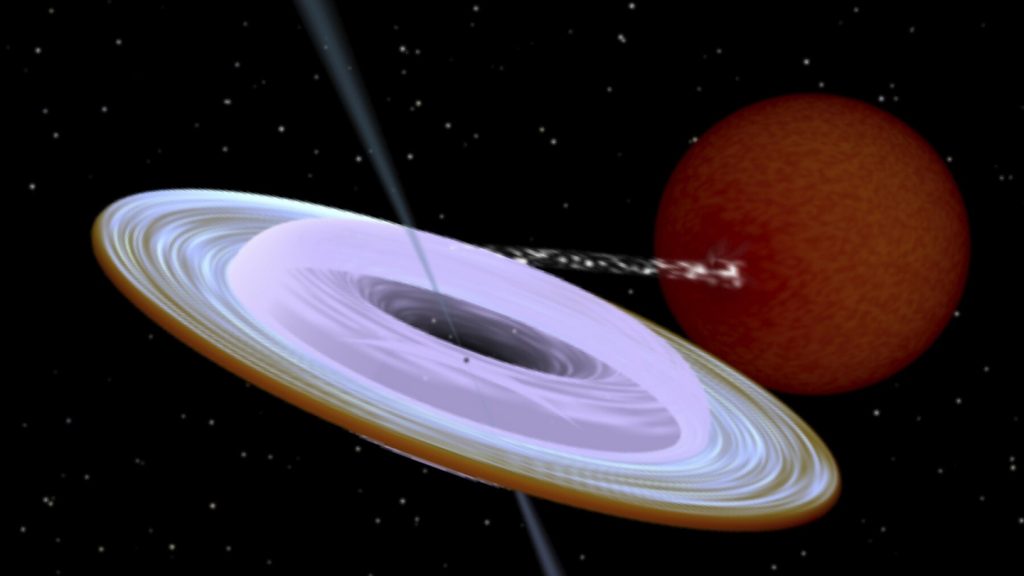The black hole MAXI J1820 + 070, which is about 10,000 light-years from Earth, poses a mystery to astronomers: researchers have observed the axis of rotation of the black hole with several telescopes on Earth and in space. They find that the MAXI J1820 + 070 axis is not perpendicular to its orbital plane, as expected, but is tilted by about 40 degrees. This is the largest tilt angle observed so far — and cannot be explained by previous theories about black holes, according to the scientists in the journal Science.
MAXI J1820 + 070 is a stellar black hole – that is, it originated from a massive star. When this star’s energy supply was exhausted, it exploded in a violent supernova, collapsing the interior of the star into a black hole – MAXI J1820 + 070. But near MAXI J1820 + 070 there is another star orbiting the black hole around the common center of mass. Because of its intense gravity, the black hole is constantly shredding material from the partner star, which in turn accumulates in a rotating disk around MAXI J1820 + 070. Some of this material falls from the disk into the black hole, but some is deflected by the magnetic fields surrounding the black hole and released into space. In two parallel jets of black hole poles.
Guri Potanin at the University of Turku in Finland and colleagues have now observed the position of the rotating disk of matter using the Liverpool Telescope in Spain and a telescope aboard the Swift satellite. This lies in the orbital plane where the black hole and the smaller partner star not only orbit each other, but also where matter flows between them. The researchers also determined the black hole’s spin axis from previous measurements of the combined jets of matter.
Until now, astronomers assumed that the axis of rotation of a black hole in such a system is approximately perpendicular to the orbital plane. But to Potanin and colleagues’ surprise, this was not the case with MAXI J1820 + 070: the black hole’s rotation axis is tilted at least 40 degrees opposite the expected direction. According to the researchers, this cannot yet be explained within the framework of the theory of the formation and development of such stellar black holes.
A supernova explosion could give the emerging black hole a kind of ‘kick’ and thus tilt its axis of rotation. But one would not expect such a big tilt. In addition, the material flowing from the orbital plane of the binary system should reduce the tilt of the spin axis over time. So the researchers now want to examine other stellar black holes to see if they also found large tilt angles there.

“Travel maven. Beer expert. Subtly charming alcohol fan. Internet junkie. Avid bacon scholar.”







More Stories
Enjoy a hot cigarette while looking at whales and tropical fish under the sea ⁉︎ “Ploom Dive” is an amazing spatial video experience using Apple Vision Pro
Apple Watch now supports sleep apnea, watchOS 11 released – Impress Watch
ASCII.jp: New macOS Release! macOS Sequoia 15 Can Display Your iPhone Screen on Your Mac!